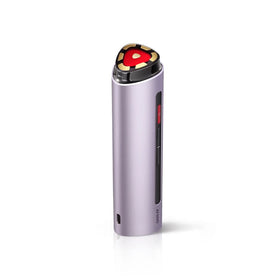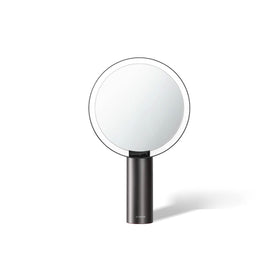PELACIÓN DE LA PARTE: 7 métodos comparados y ¿cuál es mejor para usted?
Navegación
- Introducción
- Crecimiento del vello en las piernas: ¿por qué?
- Afeitado
- Depilación
- Depilación
- Cremas depilatorias
- Electrólisis
- Depilación láser
- Depilación IPL
- Conclusión
Introducción
Tener piernas suaves y sin vello es un objetivo de belleza para muchas personas, pero con tantas opciones de depilación disponibles, puede ser un desafío determinar qué método es el más adecuado para sus necesidades y estilo de vida.
Esta guía completa explorará varias técnicas de depilación de piernas, desde el afeitado tradicional hasta la depilación moderna y Tratamientos de luz pulsada intensa (IPL)Te ayudamos a navegar fácilmente por el mundo de la depilación. Sumérgete en esta exploración a fondo y descubre el método que dejará tus piernas luciendo y sintiéndose de maravilla.
Crecimiento del vello en las piernas: ¿por qué?
Antes de sumergirnos en los métodos de depilación de las piernas, es esencial comprender los ciclo de crecimiento del cabelloEl vello crece en tres etapas: anágena (crecimiento activo), catágena (transición) y telógena (reposo). La duración de cada fase varía según la zona del cuerpo, y el vello de las piernas suele tener una fase anágena más corta que en otras zonas, lo que resulta en un crecimiento más lento. Comprender el ciclo de crecimiento del vello de las piernas puede ayudarte a elegir el método de depilación más eficaz.
¿Cuáles son los métodos más comunes para depilarse las piernas? Una sola tabla con toda la información.
| Método | Ventajas | Contras | Consejos |
|---|---|---|---|
| Afeitado |
|
|
|
| Depilación |
|
|
|
| Depilación |
|
|
|
| Cremas depilatorias |
|
|
|
| Electrólisis |
|
|
|
| Depilación láser |
|
|
|
| Depilación IPL |
|
|
|

Afeitado
El afeitado, una opción frecuentemente elegida, es un método popular y económico para eliminar el vello de las piernas.Usando una maquinilla de afeitar, puedes eliminar rápida y fácilmente el vello de la superficie de la piel.
Ventajas
- Rápido y conveniente
- Asequible
- Sin dolor cuando se hace correctamente
Contras
- Resultados duraderos (recrecimiento del cabello en pocos días)
- Riesgo de cortes, quemaduras por afeitado y pelos encarnados.
Consejos para un afeitado exitoso
- Exfolia tus piernas antes de afeitarte para eliminar las células muertas de la piel y reducir el riesgo de vellos encarnados.
- Utilice una maquinilla de afeitar limpia y afilada y cambie las hojas periódicamente.
- Aplique una crema o gel de afeitar humectante para reducir la fricción y la irritación.
- Afeite en la dirección del crecimiento del vello para minimizar el riesgo de quemaduras por afeitado y pelos encarnados.
- Enjuague la afeitadora después de cada pasada para evitar que se obstruya.
- Aplique una crema hidratante calmante después del afeitado para mantener su piel hidratada y saludable.
Depilación
- La depilación con cera es un método semipermanente de depilación de piernas que elimina el vello de raíz con cera caliente o fría. Esta técnica ofrece resultados más duraderos que el afeitado.
Ventajas
- Resultados más duraderos (hasta 4-6 semanas)
- Menos riesgo de quemaduras y cortes por afeitado
- El crecimiento del cabello tiende a ser más fino y escaso.
Contras
- Doloroso, especialmente para quienes lo hacen por primera vez.
- Puede ser costoso si se hace profesionalmente.
- Riesgo de quemaduras, irritación y pelos encarnados.
Consejos para una depilación exitosa
- Deje que el vello crezca al menos 1/4 de pulgada antes de depilarse para obtener mejores resultados.
- Exfolia tus piernas uno o dos días antes de la depilación para ayudar a eliminar las células muertas de la piel y mejorar la adherencia de la cera.
- Pruebe la temperatura de la cera caliente en una pequeña zona de su piel antes de aplicarla en sus piernas.
- Aplique la cera en la dirección del crecimiento del vello y retírela rápidamente en la dirección opuesta.
- Hidrata tus piernas después de la depilación para calmar la piel y reducir la irritación.
- Evite la ropa ajustada, las duchas calientes y la exposición al sol durante al menos 24 horas después de la depilación para minimizar la irritación de la piel.
Depilación
La depilación de las piernas implica utilizando un dispositivo portátil con múltiples pinzas que eliminan rápidamente el vello desde la raíz mientras lo deslizas sobre tu piel.
Ventajas
- Resultados más duraderos (hasta 4 semanas)
- Se puede hacer en casa
- El crecimiento del cabello es más fino y claro.
Contras
- Puede ser doloroso, especialmente para quienes lo usan por primera vez.
- Puede causar enrojecimiento e irritación temporales.
- Riesgo de pelos encarnados
Consejos para una depilación exitosa
- Exfolia tus piernas antes de depilarte para reducir el riesgo de vellos encarnados.
- Sostenga la depiladora en un ángulo de 90 grados y muévala lentamente en la dirección del crecimiento del vello.
- Utilice un ajuste de velocidad más bajo si es nuevo en la depilación o tiene piel sensible.
- Estire la piel con la mano libre para que el proceso sea más cómodo y eficiente.
- Limpie su depiladora periódicamente para garantizar un rendimiento óptimo.
- Aplique una crema hidratante calmante o gel de aloe vera después de la depilación para calmar la piel y reducir la irritación.
Cremas depilatorias
Las cremas depilatorias, también conocidas como cremas depilatorias, Utilizar productos químicos para descomponer la estructura proteica del cabello., lo que hace que sea fácil de limpiar o lavar.
Ventajas
- Sin dolor
- Asequible y fácil de usar en casa.
- Los resultados duran más que el afeitado (hasta una semana)
Contras
- Fuerte olor químico
- Puede causar irritación o reacciones alérgicas en algunas personas.
- Puede ser un desastre
Consejos para crema depilatoria exitosa usar
- Realice una prueba en una pequeña zona de la piel al menos 24 horas antes de usar la crema para asegurarse de no tener una reacción adversa.
- Aplique la crema uniformemente y siga las instrucciones del fabricante durante la duración recomendada.
- Limpie o enjuague suavemente la crema y el cabello.
- Aplica una crema humectante después de usar la crema para mantener tu piel hidratada y saludable.
Electrólisis
La electrólisis es un método de depilación permanente. Se utiliza una pequeña corriente eléctrica para destruir el folículo piloso. Este método suele ser realizado por un profesional capacitado y requiere varias sesiones.
Ventajas
- Proporciona depilación permanente.
- Apto para todo tipo de piel y cabello.
- Sin riesgo de pelos encarnados
Contras
- Costoso y lento
- Requiere múltiples sesiones para obtener mejores resultados.
- Puede ser doloroso
Consejos para una electrólisis exitosa
- Consulte con un profesional calificado para determinar si la electrólisis es la opción adecuada para usted.
- Siga las instrucciones previas y posteriores al tratamiento proporcionadas por su técnico.
- Sea paciente y comprométase con las sesiones necesarias para obtener resultados óptimos.
Depilación láser
La depilación láser utiliza energía lumínica focalizada para atacar la melanina de los folículos pilosos, reduciendo eficazmente el crecimiento del vello con el tiempo. Este método requiere varias sesiones y suele ser realizado por un profesional cualificado.
Ventajas
- Proporciona una reducción del vello duradera o incluso permanente.
- Puede ahorrar tiempo y dinero a largo plazo.
- Menor riesgo de pelos encarnados
Contras
- Costo inicial costoso
- Requiere múltiples sesiones para obtener mejores resultados.
- No apto para todo tipo de piel y cabello.
Consejos para depilación láser exitosa
- Consulte con un profesional calificado para determinar si la depilación láser es adecuada para su piel y tipo de cabello.
- Siga las instrucciones previas y posteriores al tratamiento proporcionadas por su técnico, como evitar la exposición al sol y ciertos productos para el cuidado de la piel.
- Tenga paciencia, ya que pueden ser necesarias varias sesiones para ver resultados notables.
- Alguno Guía de depilación láser aquí.
Depilación IPL
Depilación IPL Es un tratamiento basado en luz que actúa sobre la melanina de los folículos pilosos, calentándolos y causando daño que inhibe el crecimiento del vello. Este método es similar a la depilación láser, pero utiliza un espectro de luz amplio en lugar de un haz láser concentrado.
Al igual que la depilación láser, la IPL requiere varias sesiones y generalmente la realiza un profesional capacitado, aunque también hay dispositivos disponibles para el hogar.
Ventajas
- Proporciona una reducción del vello de larga duración.
- Adecuado para una gama más amplia de tipos de piel y cabello. en comparación con la depilación láser
- Menor riesgo de pelos encarnados
Contras
- Costo inicial elevado, especialmente para tratamientos profesionales.
- Requiere múltiples sesiones para obtener mejores resultados.
- Puede ser menos eficaz en cabellos muy claros o muy oscuros.
Consejos para Depilación IPL exitosa
- Consulte con un profesional calificado para determinar si la depilación IPL es adecuada para su piel y tipo de vello, o investigue a fondo los dispositivos de uso doméstico antes de comprarlos.
- Siga las instrucciones previas y posteriores al tratamiento proporcionadas por su técnico o incluidas con sus dispositivos de uso doméstico, como evitar la exposición al sol y ciertos productos para el cuidado de la piel.
- Tenga paciencia, ya que pueden ser necesarias varias sesiones para ver resultados notables.
Un dispositivo de depilación IPL muy recomendado es Dispositivo de depilación IPL AMIRO A2Este dispositivo de depilación es conocido por su eficacia, facilidad de uso y seguridad. Además, puede lograr la depilación permanente de las piernas en tan solo 4 semanas y tiene un precio razonable. Elige el mejor es importante
Conclusión
La depilación de piernas es una decisión personal, y el mejor método para usted dependerá de factores como su tolerancia al dolor, su presupuesto y los resultados deseados. Ya sea que prefiera la comodidad del afeitado, la suavidad duradera de la depilación o la eficacia de la luz pulsada (IPL) con dispositivos como... Dispositivo de depilación AMIRO, o la permanencia de la electrólisis, existe un método que se adaptará a sus necesidades.
Al comprender las ventajas y desventajas de cada técnica, puede tomar una decisión informada y entrar con confianza en el mundo de depilación de piernas , revelando piernas suaves y radiantes que realzan tu confianza y belleza..
Leer más
- ¿Qué es mejor: el tensado de la piel invasivo o no invasivo?
- Revitalice el área de los ojos para un brillo juvenil: ¿qué podemos hacer?
- Cinco formas de aumentar el colágeno y prevenir el envejecimiento prematuro
- Líneas de sonrisa: amargas y dulces
- La guía del hombre moderno para el cuidado de la piel: ¡Liberándose de la tradición!





